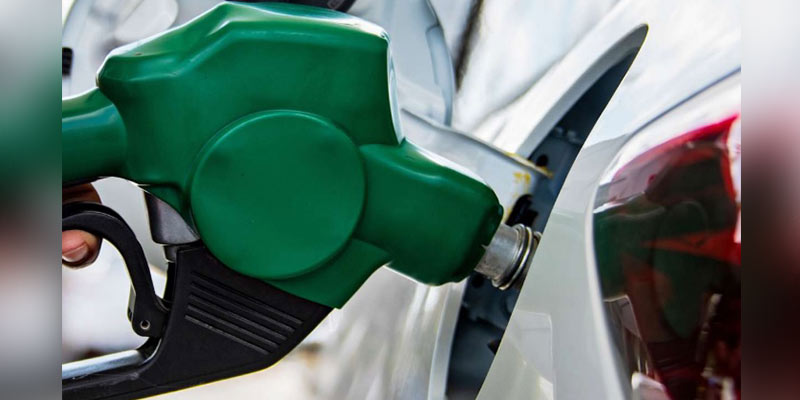- India
- Feb 07
Explainer / What is E20 fuel?
• Prime Minister Narendra Modi launched E20 fuel at 84 retail outlets of oil marketing companies in 11 states/UTs along the lines of the ethanol blending roadmap.
• E20 is a blend of 20 per cent ethanol with petrol.
• Automobile engines can run on E20 with minor modifications in the engine.
• The E20 fuel was rolled out as part of a programme to increase use of biofuels to cut emissions as well as dependence on foreign exchange-draining imports.
• At present, 10 per cent ethanol is blended in petrol (10 per cent ethanol, 90 per cent petrol) and the government is looking to double this quantity by 2025.
• The government advanced the target of 20 per cent ethanol blending in petrol from earlier 2030 to 2025.
• In the first phase, 15 cities will be covered and in the next two years it will be expanded throughout the country.
• E20 (petrol with 20 per cent ethanol) will be available at 84 petrol pumps of three state-owned fuel retailers in 11 states/UTs.
EBP to reduce dependence on imported fossil fuels
• The energy demand in our country is rising due to an expanding economy, growing population, increasing urbanisation, evolving lifestyles and rising spending power. About 98 per cent of the fuel requirement in the road transportation sector is currently met by fossil fuels and the remaining 2 per cent by biofuels. Today, India imports 85 per cent of its oil requirement.
• Domestic biofuels provide a strategic opportunity to the country, as they reduce the nation’s dependence on imported fossil fuels. In addition, when utilised with appropriate care, biofuels can be environmentally friendly, sustainable energy sources. They can also help generate employment, promote ‘Make in India’, Swachh Bharat, doubling of farmers’ incomes and promote waste-to-wealth generation.
• India is the world’s fifth largest producer of ethanol after the US, Brazil, EU and China.
• Ethanol worldwide is largely used for consumption but nations like Brazil and India also dope it in petrol.
• Blending locally produced ethanol with petrol will help India strengthen its energy security, enable local enterprises and farmers to participate in the energy economy and reduce vehicular emissions.
The roadmap for ethanol blended petrol programme
• With a view to give a boost to the agriculture sector and to reduce environmental pollution, the government of India had launched pilot projects in 2001 wherein, 5 per cent ethanol blended petrol was supplied to retail outlets.
• Apart from field trials, R&D studies were also simultaneously conducted. The success of these field trials and studies paved the way for EBP in India.
• The government decided to launch Ethanol Blended Petrol (EBP) Programme in January 2003 for sale of 5 per cent ethanol blended petrol in nine states and four UTs.
• In 2006, the ministry of petroleum and natural gas extended the sale of 5 per cent ethanol blended petrol to 20 states and four UTs. However, the performance of the programme remained limited due to challenges such as non-inclusion of conversion of grain to ethanol, high taxation of ethanol, limited availability of feedstock and infrastructure, among others.
• The ‘National Policy on Biofuels’ notified by the government in 2018 envisaged an indicative target of 20 per cent ethanol blending in petrol by year 2030.
• The target of achieving an average of 10 per cent blending has been achieved in June 2022, much ahead of the target date of November 2022.
• The government has advanced the target of 20 per cent ethanol blending in petrol from earlier 2030 to Ethanol Supply Year (ESY) 2025-26.
Advantages of ethanol blending
• Ethanol is one of the principal biofuels, which is naturally produced by the fermentation of sugar by yeast or via petrochemical processes such as ethylene hydration.
It is an agro-based product, mainly produced from a byproduct of the sugar industry, namely molasses.
• Ethanol blending offers significant advantages such as increase in Research Octane Number (RON) of the blend, fuel embedded oxygen and higher flame speed. These properties of ethanol help in complete combustion and reduce vehicular emissions such as hydrocarbon, carbon monoxide and particulate matter.
• Use of E20 leads to an estimated reduction of carbon monoxide emissions by about 50 per cent in two-wheelers and about 30 per cent in four-wheelers compared to E0 (neat petrol). Hydrocarbon emissions are estimated to reduce by 20 per cent in both two-wheelers and passenger cars.
According to a study by NITI Aayog, while using E20 fuel, there will be a drop in fuel efficiency by nearly:
a) 6-7 per cent for 4 wheelers designed for E0 and calibrated for E10.
b) 3-4 per cent for 2 wheelers designed for E0 and calibrated for E10.
c) 1-2 per cent for 4 wheelers designed for E10 and calibrated for E20.
• However, with the modifications in engines (hardware and tuning), the loss in efficiency due to blended fuel can be reduced.
Manorama Yearbook app is now available on Google Play Store and iOS App Store



